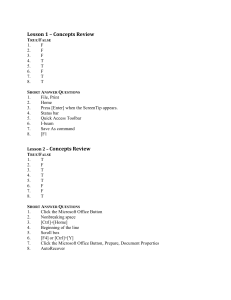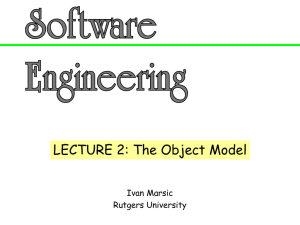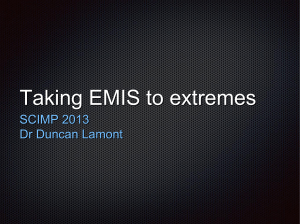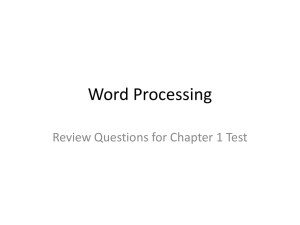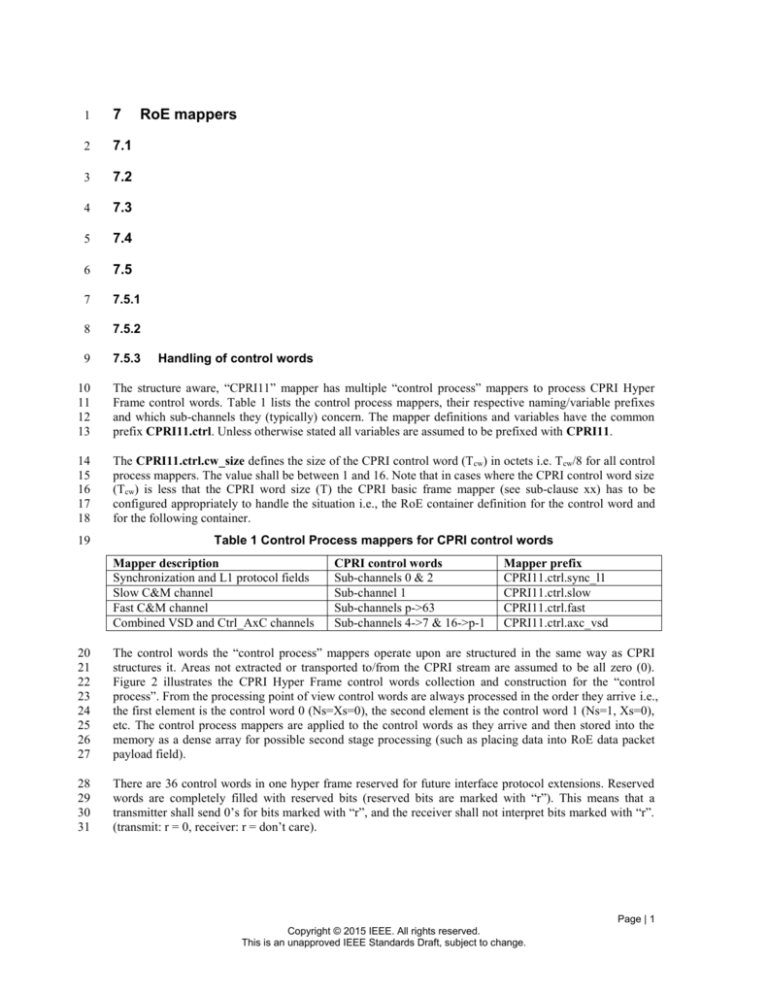
1
7
RoE mappers
2
7.1
3
7.2
4
7.3
5
7.4
6
7.5
7
7.5.1
8
7.5.2
9
7.5.3
Handling of control words
10
11
12
13
The structure aware, “CPRI11” mapper has multiple “control process” mappers to process CPRI Hyper
Frame control words. Table 1 lists the control process mappers, their respective naming/variable prefixes
and which sub-channels they (typically) concern. The mapper definitions and variables have the common
prefix CPRI11.ctrl. Unless otherwise stated all variables are assumed to be prefixed with CPRI11.
14
15
16
17
18
The CPRI11.ctrl.cw_size defines the size of the CPRI control word (Tcw) in octets i.e. Tcw/8 for all control
process mappers. The value shall be between 1 and 16. Note that in cases where the CPRI control word size
(Tcw) is less that the CPRI word size (T) the CPRI basic frame mapper (see sub-clause xx) has to be
configured appropriately to handle the situation i.e., the RoE container definition for the control word and
for the following container.
19
Table 1 Control Process mappers for CPRI control words
Mapper description
Synchronization and L1 protocol fields
Slow C&M channel
Fast C&M channel
Combined VSD and Ctrl_AxC channels
CPRI control words
Sub-channels 0 & 2
Sub-channel 1
Sub-channels p->63
Sub-channels 4->7 & 16->p-1
Mapper prefix
CPRI11.ctrl.sync_l1
CPRI11.ctrl.slow
CPRI11.ctrl.fast
CPRI11.ctrl.axc_vsd
20
21
22
23
24
25
26
27
The control words the “control process” mappers operate upon are structured in the same way as CPRI
structures it. Areas not extracted or transported to/from the CPRI stream are assumed to be all zero (0).
Figure 2 illustrates the CPRI Hyper Frame control words collection and construction for the “control
process”. From the processing point of view control words are always processed in the order they arrive i.e.,
the first element is the control word 0 (Ns=Xs=0), the second element is the control word 1 (Ns=1, Xs=0),
etc. The control process mappers are applied to the control words as they arrive and then stored into the
memory as a dense array for possible second stage processing (such as placing data into RoE data packet
payload field).
28
29
30
31
There are 36 control words in one hyper frame reserved for future interface protocol extensions. Reserved
words are completely filled with reserved bits (reserved bits are marked with “r”). This means that a
transmitter shall send 0’s for bits marked with “r”, and the receiver shall not interpret bits marked with “r”.
(transmit: r = 0, receiver: r = don’t care).
Page | 1
Copyright © 2015 IEEE. All rights reserved.
This is an unapproved IEEE Standards Draft, subject to change.
L1+Sync
Slow C&M
Fast C&M
AxC + VSD
<- RoE data flows, RoE control flows, native Ethernet, local registries
”control process” mappers
Apply the ”control process” mappers as soon as data is available..
Control Word
Control Word
AxC0
AxC2
i
1
2
3
Basic Frames
Control Word
...
Control Word
i+2
i+1
Control Word
AxC1
Control Word
AxC0
AxC1
AxC3
Control Word
i+K
AxC0
AxC1
AxC2
...
Control Word
AxC0
AxC1
Figure 1 - CPRI basic frame and "control process" interaction
4
5
Figure 2 CPRI Hyper Frame worth of Control Words
6
7
8
9
10
11
12
13
14
15
16
17
18
19
20
The control process mappers for Slow C&M and Fast C&M channels blocks use the following common
container construction:
{
.cw_sel
.cw_start
.cw_num
.cw_size
.flow_id
.filter_mode
.hfn_modulo
.hfn_index
.offset
.value
.mask
}
21
22
23
24
25
There can be, depending on the case, one or more containers per control process mapper. The control
process mapper for Slow C&M and Fast C&M have the following common construction:
{
.container
}
26
27
28
29
The control process mapper for the combined Ctrl_AxC and VSD has the following construction:
{
.container[0..n]
}
30
The maximum number of containers is 16.
31
[///Editor’s note: Need to agree on mask scheme]
32
33
The .cw_sel is a four bit mask for selecting sub-channel words (Xs) to extract. The selected sub-channel
words equal to “logical or” of corresponding sub-channel masks. See Table 2 for the mask values.
34
Table 2 Sub-channel word bit masks
Binary mask
0000b
0001b
Sub-channel word (Xs index)
sub-channel processing disabled – container not in
use.
Xs = 0
Page | 2
Copyright © 2015 IEEE. All rights reserved.
This is an unapproved IEEE Standards Draft, subject to change.
AxC2
0010b
0100b
1000b
Xs = 1
Xs = 2
Xs = 3
1
2
3
4
The number of containers depend on the used control word mapper. Both the CPRI11.ctrl.slow and
CPRI11.ctrl.fast have only one container e.g., CPRI11.ctrl.fast.container. The combination of .cw_sel
and multiple containers allow handling of arbitrary areas within CPRI control words as illustrated in Figure
2.
5
[///Editor’s note: Range is a function of line rate. 64 is valid for 4.9GHz]
6
7
8
9
10
The .cw_start defines the start of sub-channel (Ns) and has the valid range from 0 to 63. The .cw_size
defines the number of extracted sub-challes and the valid range is from 1 to 64. The mask defined
by .cw_sel applies to the “area” defined by the .cw_start and .cw_num, The specific mapper definitions
may have more specific restriction to the ranges. If there are multiple containers the areas they define
shall not overlap each other.
11
The .flow_id maps to RoE header flow_id field.
12
13
The .filter_mode specifically concerns the control process mapper when it has to generate a RoE packet.
See Table 3 for further details.
14
Table 3 Hyper Frame filtering options
.filter_mode
0
1
2
3
4
Description
Filtering is disabled. RoE packet is generated on every Hyper Frame.
Non-zero content i.e., the extracted content has non-zero values.
Periodic generation according to modulo logic.
Extracted content has changed since the previously generated RoE packet.
Pattern match.
15
16
17
Note that when the “.filter_mode” is set to 0 (filtering disabled) the packet can be generated and sent as
soon as the required amount of control word data has been collected. There is no need to wait until the
entire hyper frame has been received.
18
19
20
21
22
23
The .hfn_modulo operates on the entire extracted (Hyper Frame size) CPRI control words area and
combined with .hfn_index allows selecting specific Hyper Frames for further processing.
The .hfn_modulo has the valid range from 1 to 150. The .hfn_index has the valid range from 0 to 149.
The modulo logic is synchronized with the current Hyper Frame Number (HFN). For example
current_HFN%.hfn_modulo would select Hyper Frame control words for control process mapper
processing when the reminder of the modulo operation equals to .hfn_index.
24
25
26
27
28
The .offset, .value and .mask concern the pattern match .filter_mode. The .offset has valid range from 0
to 4095. Both .value and .mask are 32 bit values. The pattern match is applied to the Hyper Frame after
applying other parser options such as .cw_sel, .cw_start and .cw_size. The offset is relative to the
extracted (dense array or buffer of) control words. The match is true when the 32 bit value extracted
from the memory equals to the .value after applying a “logical and” to it using the .mask.
29
30
Whenever parameter configurations refer to a value “p” that refers to the pointer in CPRI control word
Z.194.0 indicating the start of Fast C&M channel sub-channels.
31
32
Table 4 summarizes the variable for the “control process” stage container definitions and their sizes for the
CPRI11.ctrl.sync_l1, CPRI11.ctrl.slow, CPRI11.ctrl.fast and CPRI11.ctrl.axc_vsd mappers.
33
Table 4 - CPRI control word mapper container variables
Variable
Bits
Description
Page | 3
Copyright © 2015 IEEE. All rights reserved.
This is an unapproved IEEE Standards Draft, subject to change.
.cw_sel
4
.cw_start
.cw_num
6
6
.cw_size
5
.flow_id
.filter_mode
8
3
.hfn_modulo
8
.hfn_index
.offset
8
12
.value
.mask
32
32
A four bit mask for selecting sub-channel words (Xs) to extract. Bit 0 corresponds
to Xs word with index 0 and Bit 3 to Xs =3. The selected sub-channel words equal
to “logical or” of corresponding sub-channel masks.
The first sub-channel allocated for parser. Valid range is from 0 to 63.
Number of consecutive sub-channels allocated for the control data. Valid range is
from 0 to 63. Value of 0 selects/extracts no sub-channels.
Number of bytes per control word to extract. Valid values are 0 to Tcw/8 and the
maximum is 16 bytes. The extracted bytes are in network order.
The flow_id used in the generated RoE packets.
Controls the generation of the RoE packets from the extracted CPRI control
words.
Modulo operation applied to current CPRI hyper frame number. Valid range from
1 to 150. Whether the modulo is applied depends on the “.filter_mode” setting.
The index to match after the modulo operation. Valid range from 0 to 149.
The offset into the extracted control word buffer for masking and value
comparison operation. Valid range from 0 to 4095. Whether the offset-based mask
and value comparison is applied depends on the “.filter_mode” setting.
The value to compare agaist after the mask operation.
The bit mask (logical AND) for the offset-based comparison operation.
1
2
7.5.4
Synchronization and L1 protocol fields
3
4
5
6
7
8
9
10
11
CPRI Synchronization and L1 protocol fields are not transported over the RoE. They are only provided for
the local use by the “control process”. The following information is supported (using CPRI control word
notation):
a) HFN (Hyperframe number) at location Z.64.0 i.e., control word 64.
b) BFN (CPRI 10ms frame number) at locations Z.128.0 and Z.192.0 i.e., control words 128 and 192.
c) Protocol version at location Z.2.0 i.e., control word 2.
d) HDLC bit rate at location Z.66.0 i.e., control word 66.
e) L1 signaling at location Z.130.0 i.e., control word 130.
f) Ethernet pointer at location Z.194.0 i.e., control word 194.
12
7.5.5
13
The Slow C&M channel is mapped into a RoE data flow.
14
15
16
17
18
The Slow C&M channel shall have the following parameterization:
a) CPRI11.ctrl.slow.container.cw_start=1
b) CPRI11.ctrl.slow.container.cw_num=1
c) CPRI11.ctrl.slow.container.flow_id=0 (or some other value depending on the deployment)
d) CPRI11.ctrl.slow.container.cw_size=based on the HDLC bit rate
19
20
21
The Slow C&M channel should have the following parameterization:
a) CPRI11.ctrl.slow.container.cw_sel=1111b but may differ based on the HDLC bit rate
b) CPRI11.ctrl.slow.container.filter_mode=0
22
23
The rest of the parameters depend on the deployment. Figure X illustrates a construction of RoE
pkt_type=000100b based on the configuration given above.
Slow C&M Packet (pkt_type 000100b)
Page | 4
Copyright © 2015 IEEE. All rights reserved.
This is an unapproved IEEE Standards Draft, subject to change.
Xs = 0
Ns = 0
1
2
3
4
RoE pkt_type=000100b
RoE flow_id=?
RoE header
Xs=0
Xs=1
...
1
2
3
Sync
&
tim..
..ing
Slow
C&M
Slow
C&M
L1
L1
Re
ser
ved
...
Ctrl
...
...
p
Xs=3
payload size from 1 to 64 octets
1
Figure 3 - Example RoE packet for transporing CPRI Slow C&M flow
2
7.5.6
Use of sequence numbers with pkt_type 000100b
4
5
6
7
8
9
10
11
The use
apply:
a)
b)
c)
d)
e)
f)
of sequence number shall be consistent with the corresponding data flow. The following shall
seqNumPMax=150*256/CPRI11.numBasicFramesPerPacket-1
seqNumPInc=1
seqNumPIncProp=1
seqNumQMax=4095
seqNumPInc=1
seqNumPIncProp=1
12
7.5.7
Fast C&M channel packets
13
14
15
16
17
The “control process” shall extract the control words for the Fast C&M channel and create an appropriate
Ethernet packet out of the extracted Ethernet packet data (e.g., discarding SSD, ESD and IDLE bit
sequences). The Fast C&M channel is sent/received as native Ethernet traffic. The used Physical Coding
Sublayer (PCS) shall be according to the underlying link and the mapper is responsible of doing possible
required conversions.
18
19
20
21
22
23
The Fast C&M channel shall have the following parameterization:
a) CPRI11.ctrl.fast.container.cw_start=p (refer CPRI control word Z.194.0 for “p”)
b) CPRI11.ctrl.fast.container.cw_num=64-p
c) CPRI11.ctrl.slow.container.cw_size=Tcw/8
d) CPRI11.ctrl.fast.container.cw_sel=1111b
e)
24
25
26
The Fast C&M channel should have the following parameterization:
a)
b) CPRI11.ctrl.fast.container.filter_mode=0
27
28
29
30
31
The rest of parameters are not needed. Figure X illustrates an overly simplified construction of Fast C&M
Ethernet packet based on the configuration given above. If the Fast C&M embedded Ethernet packet does
not align into CPRI basic frame boundaries or does not fit into a single basic frame, it is the “control
process” responsibility to buffer requirent amount of data to make a successful conversion between CPRI
control words and the native Ethernet packets.
3
Page | 5
Copyright © 2015 IEEE. All rights reserved.
This is an unapproved IEEE Standards Draft, subject to change.
Xs = 0
Ethernet payload
Eth header
Ns = 0
1
2
3
4
FCS
Possible physical layer conversion
Z.p.0, ...
Z.p+64.0, ...
Z.p+192.0, ...
..., Z.p+1.0, ...
..., Z.255.0, ...
1
2
3
Sync
&
tim..
..ing
Slow
C&M
Slow
C&M
L1
L1
Re
ser
ved
...
Ctrl
...
...
...
...
p
...
...
p
62
63
1
4
5
6
7
C&M
...
...
Fast
VSD
C&M
Figure 4 – A naïve example of CPRI Fast C&M transport over native Ethernet
2
3
Fast
6.3.7.1
a)
b)
c)
8
9
10
11
12
13
6.3.7.2
a)
b)
c)
14
15
7.5.8
16
TBD
Ctrl_AxC and VSD packet (pkt_type 000000b subtype 00000100b)
Page | 6
Copyright © 2015 IEEE. All rights reserved.
This is an unapproved IEEE Standards Draft, subject to change.

